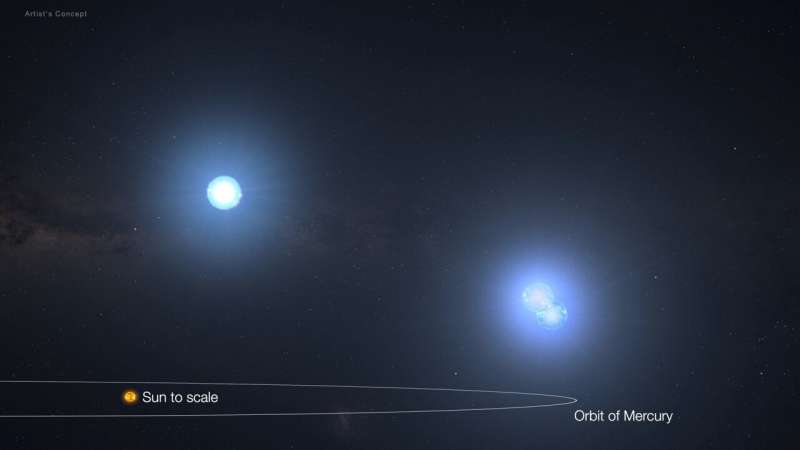Astronomers have made a groundbreaking discovery of a unique triple star system, TIC 290061484, that breaks the previous record for the shortest outer orbital period in such systems. This discovery was made possible with the help of artificial intelligence and the data from NASA’s Transiting Exoplanet Survey Satellite (TESS). The system features a pair of twin stars that orbit each other every 1.8 days, along with a third star that orbits the duo in just 25 days. This finding provides valuable insights into the formation and evolution of multi-star systems. Exoplanet and stellar evolution research are expected to benefit from this discovery.

Triple Star System Found: Rare and Compact
Astronomers have found a not-so-easy-to-come-by triple star system, which they introduced as TIC 290061484. The system, which sits in the constellation Cygnus 16,300 light-years from Earth, contains two twin stars that dance around each other every 1.8 days and a third star that twirls around the pair in only 25 days. That bests the long-standing record for the shortest outer orbital period among all such systems we knew about, set back in 1956 with a third star orbiting an inner pair every 33 days.
The system is compact and edge-on, which has let astronomers measure the orbits, masses, sizes, and temperatures of its stars with great precision. This information helps us understand how the system originated and possibly where it may go next. Professional and amateur astronomers have worked together to identify the patterns of dimming with machine-learning techniques in starlight data courtesy of the TESS mission.
Revealing the Mysteries of Multi-Star Systems
The find of TIC 290061484 is especially notable because very few such compact multi-star systems are found, yet they might be much more prevalent than our current numbers indicate. Astronomers suspect there could be plenty of other such systems lurking in our galaxy.
The TIC 290061484 system is in a tight, stable configuration because the stars orbit almost in the same plane and their gravitational interactions are not very disruptive to each other. CLICK TO READ FULL ARTICLE However, it also means that the system likely has no remaining planet-building material and so would not be a good potential host of planets as any planetary angstroms would have long since been shattered.
This triple-star system also may have an interesting future ahead. When the inner stars age, they’ll also expand and then collide, forming a supernova that should go off in about 20 to 40 million years. In the meantime, astronomers will keep pores and skin on this bizarre system hoping for additional clues to how multi-celebrity systems are born. Right up until then …
FUTURE TELESOPES: PUSHING THE LIMITS.
This is just the tip of the iceberg in terms of what we can do with multiple star systems, but even one or two more examples would have huge benefits for helping us understand how stars are born. The upcoming Nancy Grace Roman Space Telescope will take even more detailed observations of these objects, a fact that excites astronomers everywhere.
Enabled by its high-resolution imaging capability and surveying hundreds of millions of stars, the Roman Telescope will assist in finding many more triple star systems, including some with even shorter outer orbital periods. The telescope’s deep, focused observations of the crowded starry hearts of stars may uncover new classes of multi-star systems and other exotic phenomena out there in space.
As we discovered in these complex systems, astronomers are certain that powerful new tools such as the Roman Telescope will continue to reveal more surprising and exotic cases in our galaxy.
